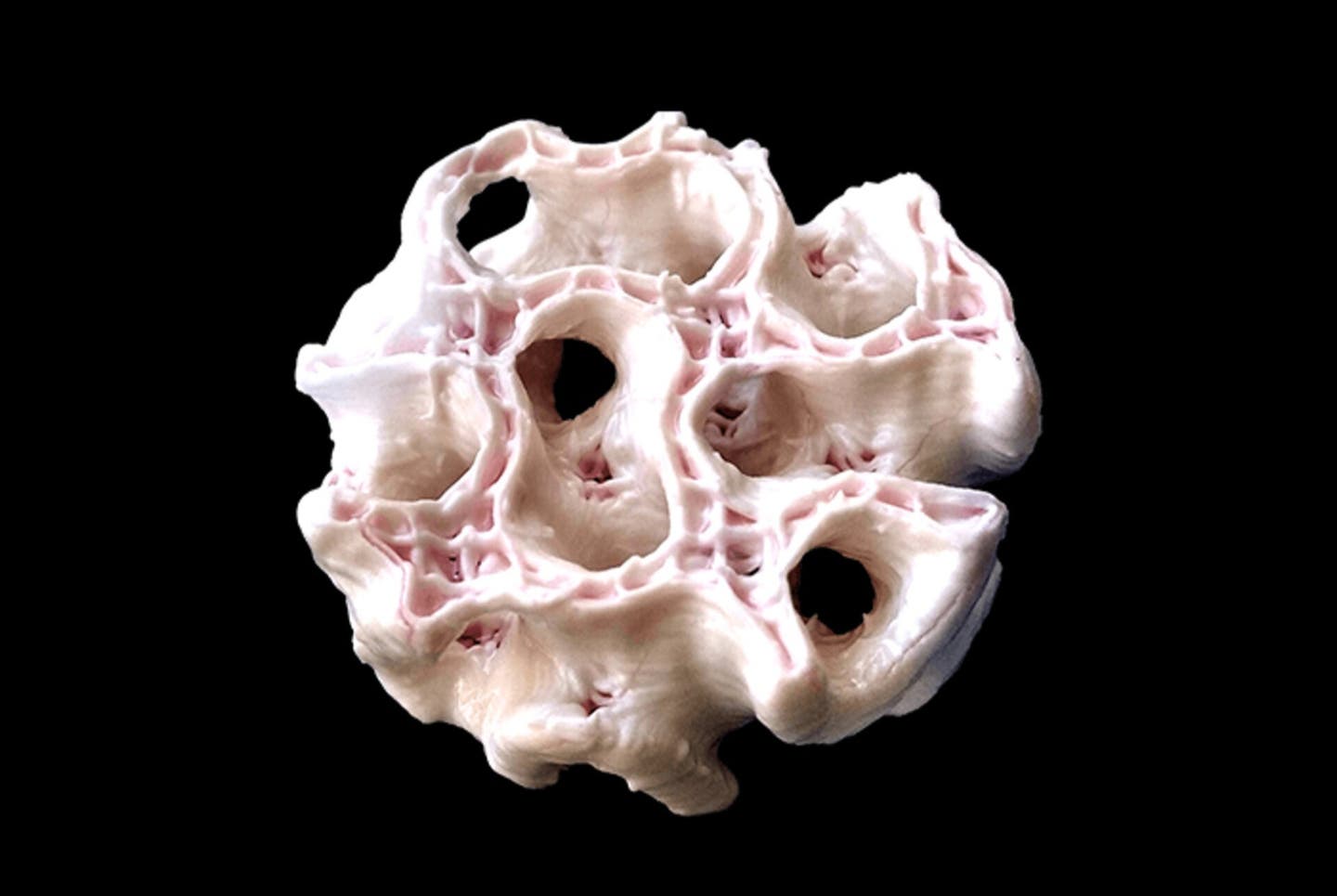3D-printed bone for emergency medicine in space
3D bioprinting may soon be practical on Earth, and could help meet the challenging conditions of spaceflight.

[Apr 12, 2022: European Space Agency]
3D bioprinting may soon be practical on Earth, and could help meet the challenging conditions of spaceflight. (CREDIT: ESA-Remedia)
This artificial bone sample is an early step towards making 3D bioprinting a practical tool for emergency medicine in space. An ESA R&D effort aims to develop bioprinting techniques capable of giving astronauts on an extended mission ready access to the "spare parts" needed for bone or skin grafts, and even complete internal organs.
3D bioprinting may soon be practical on Earth, and could help meet the challenging conditions of spaceflight. Astronauts in zero or low gravity lose bone density, for example, so fractures may be more likely in orbit or on Mars.
Or, treating a burn often involves a graft of skin taken from a patient's body—manageable on Earth with full hospital care but more risky in space, as the secondary damage may not heal easily.
Related Stories
Skin or bone can be bioprinted using a nutrient-rich "bio-ink" of human blood plasma, available from the astronauts themselves. By working upside down—in "minus 1g" gravity—the team has shown they can probably do it in space.
This bone sample is part of the first selection of items on the 99 Objects of ESA ESTEC website, a set of intriguing, often surprising artifacts helping tell the story of more than half a century of activity at ESA's technical heart.
Note: Materials provided above by European Space Agency. Content may be edited for style and length.
Like these kind of feel good stories? Get the Brighter Side of News' newsletter.
Tags: #New_Innovation, #Bones, #3D_Printing, #Medical_Good_News, #Space, #Astronauts, #Technology, #Science, #Research, #The_Brighter_Side_of_News
Joseph Shavit
Head Science News Writer | Communicating Innovation & Discovery
Based in Los Angeles, Joseph Shavit is an accomplished science journalist, head science news writer and co-founder at The Brighter Side of News, where he translates cutting-edge discoveries into compelling stories for a broad audience. With a strong background spanning science, business, product management, media leadership, and entrepreneurship, Joseph brings a unique perspective to science communication. His expertise allows him to uncover the intersection of technological advancements and market potential, shedding light on how groundbreaking research evolves into transformative products and industries.



